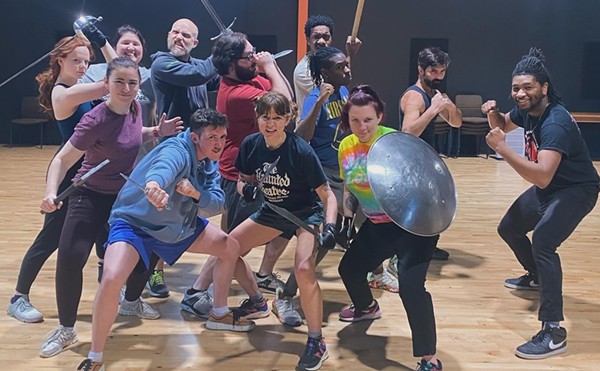Spiral Jetta: A Road Trip Through the Land Art of the American West
By Erin Hogan. University of Chicago Press; 190 pgs., $20.
The Lost Art of Walking: The History, Science, and Literature of Pedestrianism
By Geoff Nicholson. Riverhead; 288 pgs., $24.95.
Given a choice, I would always rather walk than drive. Imagine my surprise when, after recently reading two travel books, I found myself enamored of a car-based journey over a pedestrian one. First-time author Erin Hogan’s “Spiral Jetta: A Journey Through the Land Art of the American West” is a tightly written, engaging work that blends elements of memoir, art criticism and travel writing, while prize-winning novelist Geoff Nicholson’s “The Lost Art of Walking” is a rambling, lazy book, the only destination of which seems to be the author’s to the bank.
Hogan, the director of public affairs at the Art Institute of Chicago, calls herself a “recovering art historian,” and she is versed in both the academic and popular criticism of American land art. She sets out on a well-trodden pilgrimage to see the monumental works of Donald Judd, Walter de Maria, Michael Heizer, Nancy Holt and Robert Smithson, as both an exercise in art appreciation and a personal exploration outside the bounds of her familiar urban existence. Hogan is unflinching in both her reactions to the works, some of which fail to impress her as deeply in person as they do in photographs, and in her assessment of herself. She occasionally panics in her solitude, and her somewhat poor sense of direction and inadequate planning leave many parts of her journey to hit or miss. Even these faults are a testament to the book’s lack of pretentiousness, a blessing in a story of visiting great works of art.
Hogan creates vivid images of the places she visits, through her windshield and on the ground. A skeptic by nature, she is still open to wonder. Of the trip through the Navajo Nation to see Michael Heizer’s “Double Negative,” she writes:
“The only real population centers were roadsides and pull-offs, where people sold silver and blankets … So I simply drove, conscious of a murmuring bleakness at the core of the landscape. Whether it originated in the thought of Native Americans now corralled into casino-filled corners of the landscape or the copses of lonely rock formations I kept passing, I couldn’t tell. There was a solidity and timelessness in this whole area but also an emptiness, a void that left room for mythologies and worship and superstitions and thoughts designed to fill the space the landscape carved into the self.”
Given the title “The Lost Art of Walking,” I expected Geoff Nicholson to be a passionate advocate of the environmental, communitarian, health and psychological benefits of walking. Instead, he writes, “There is, of course, an environmental argument in favor of walking … However, the changes that would be needed to convert us into a nation of walkers rather than car users are so colossal that it seems to me that we’re not talking about promoting pedestrianism here, but rather about attempting to change human nature itself …”
Not only does Nicholson’s assessment ignore human history, let alone recent thinking about urban planning and resource management, it signals that he occupies an unusual position for a writer on walking: the contrarian pedestrian.
Having sloughed off with a shrug so much of what makes his subject urgent and interesting, Nicholson fills 250 pages with oddities, including a numbing and scattershot list of song lyrics that include words related to walking: “The fact that Run-DMC did a fantastic hit version of ‘Walk This Way’ is enough to make us realize that rappers can be walkers, too, though not very far or very fast, that would scuff up their immaculate sneakers, but whenever you have a lot of pimps you’re likely to have a lot of people doing Tom Wolfe’s ‘pimp roll.’”
We do learn that Nicholson likes martinis, sometimes has too many, and then stumbles around. And that he practices his swagger so he can look more intimidating. He does not like many of his peers, including the respected landscape writer Rebecca Solnit, whom he, gallingly, calls, “oblivious and irony-free.” And though he fails to create a memorable image of any place, he is dismissive of Virginia Woolf, one of the greatest portraitists of the mind navigating memory and urban space, most famously in the opening pages of “Mrs. Dalloway.”
If you are looking for a great book on walking, pick up one by Solnit, Woolf, W.G. Sebald, Joseph Mitchell, or E.B. White’s “Here is New York.” If you are looking for a young writer with genuine observations about the intersections of culture and landscape, take Hogan’s “Spiral Jetta” for a spin.





